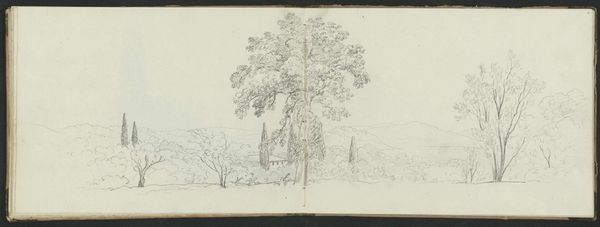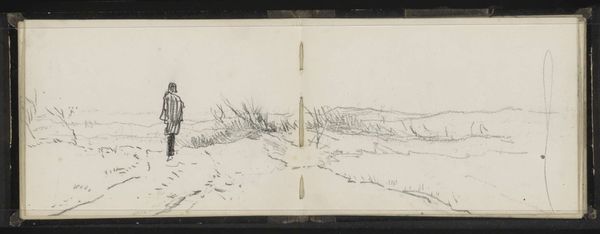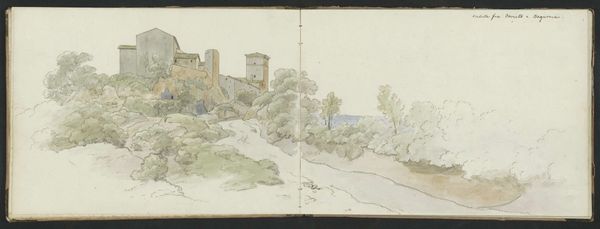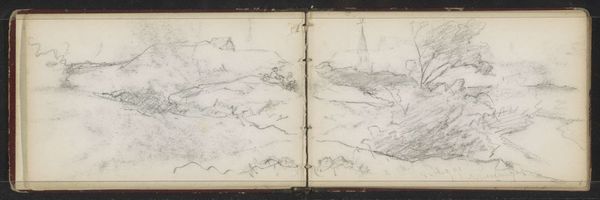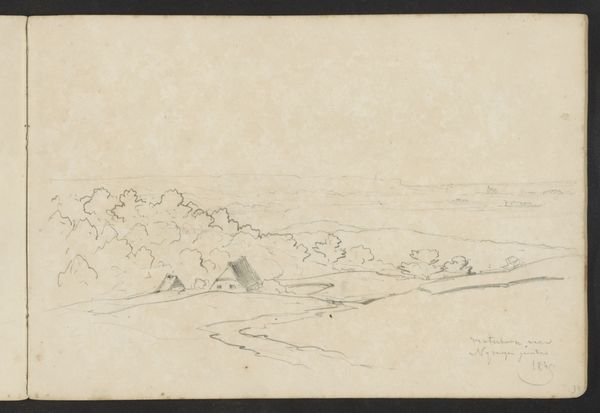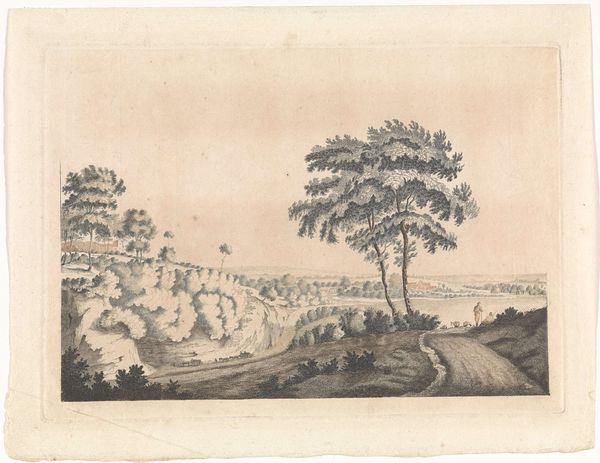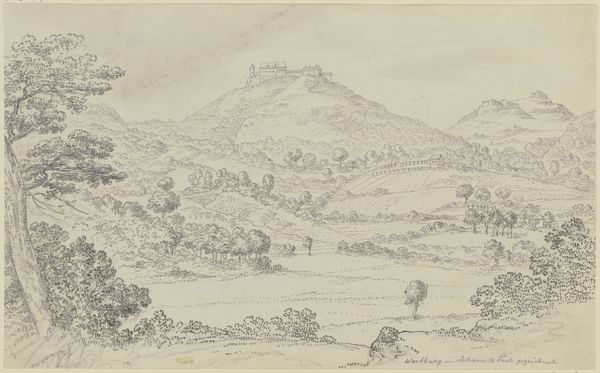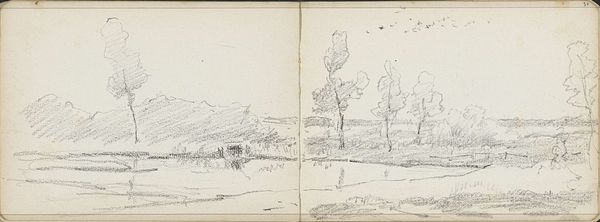
Heuvellandschap tussen Celleno en Grotte Santo Stefano c. 1808 - 1857
0:00
0:00
#
light pencil work
#
quirky sketch
#
pen sketch
#
sketch book
#
incomplete sketchy
#
personal sketchbook
#
pen-ink sketch
#
sketchbook drawing
#
watercolour illustration
#
sketchbook art
Copyright: Rijks Museum: Open Domain
Editor: We're looking at "Heuvellandschap tussen Celleno en Grotte Santo Stefano," a landscape drawing by Abraham Teerlink, dating from somewhere between 1808 and 1857. It’s currently housed at the Rijksmuseum. There’s something really delicate about this work. It’s almost faded, and quite loose, as if capturing a fleeting impression of the landscape. How do you interpret this piece? Curator: Indeed, this sketch, likely from a personal sketchbook, speaks volumes about the artist's process and the cultural context of landscape art at the time. Consider the rise of Romanticism. Artists were increasingly interested in capturing not just the literal appearance of nature, but also its emotional impact. The light pencil and watercolor work suggests a focus on immediacy, perhaps even the sublime. Editor: So, it’s less about topographical accuracy and more about… feeling? Curator: Precisely. How does the format, this being in a sketchbook, influence its reception? Editor: Well, knowing it’s from a sketchbook gives it a sense of intimacy. It feels like a glimpse into the artist's private world. Maybe this was never intended for public display but instead reflects personal contemplation of nature's beauty. It reminds us that art's meaning shifts depending on where and how it's displayed and who gets to see it. Curator: Exactly. The Rijksmuseum displaying a seemingly private sketch elevates it to a public artwork. We, as viewers, participate in reshaping its meaning. We grant a personal record significance by considering it in historical context. It reflects how institutions shape our perception and appreciation of even seemingly simple sketches. Editor: I never considered that! This discussion really highlighted how the historical and social context completely reframes how we see art. Curator: And understanding that process, of reframing, deepens our engagement with both art and its history.
Comments
No comments
Be the first to comment and join the conversation on the ultimate creative platform.




